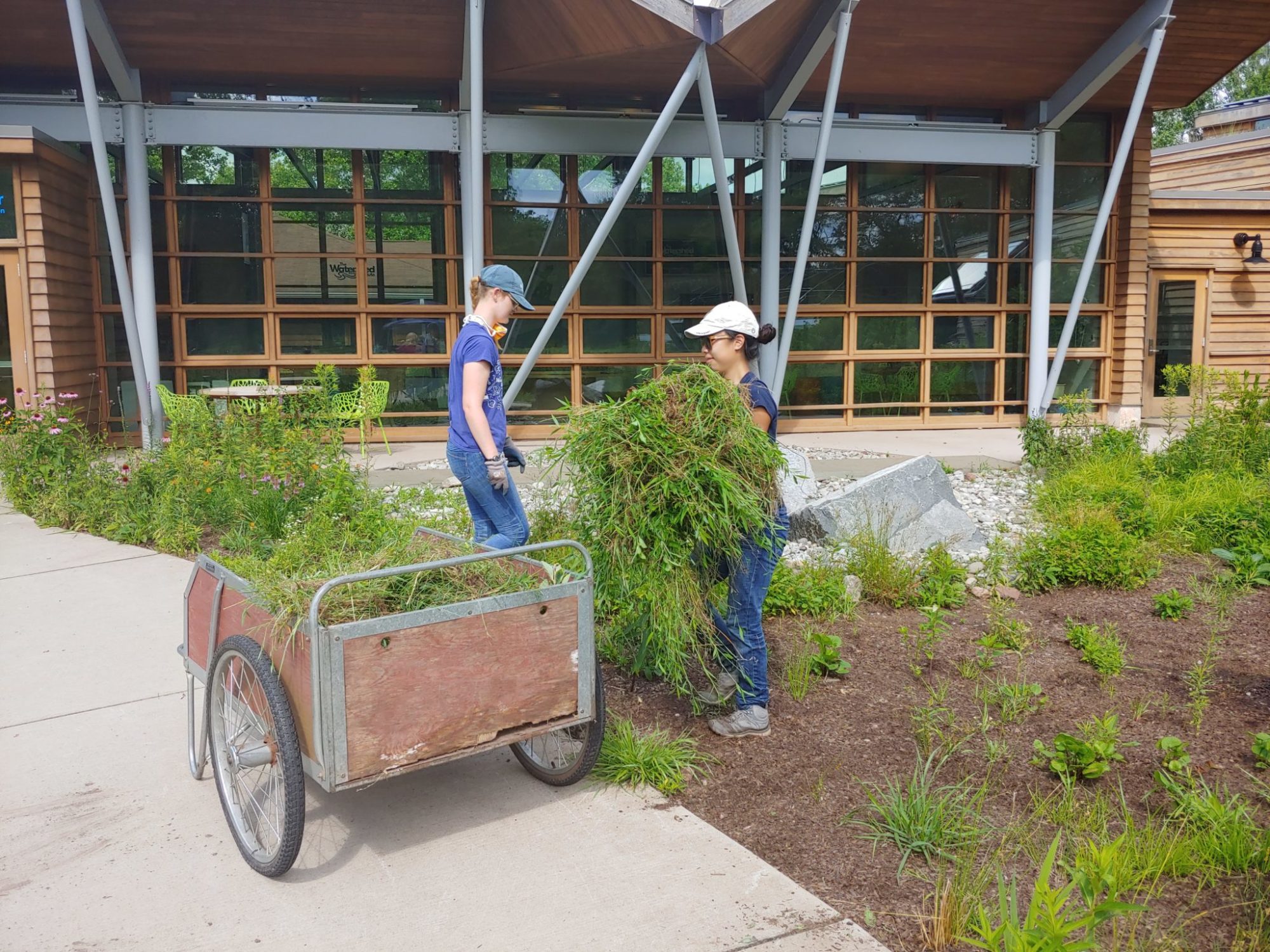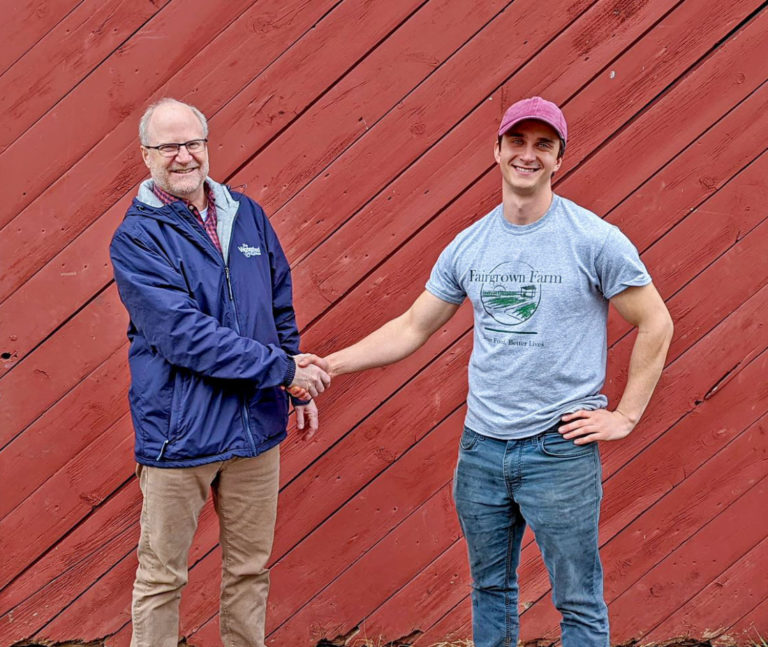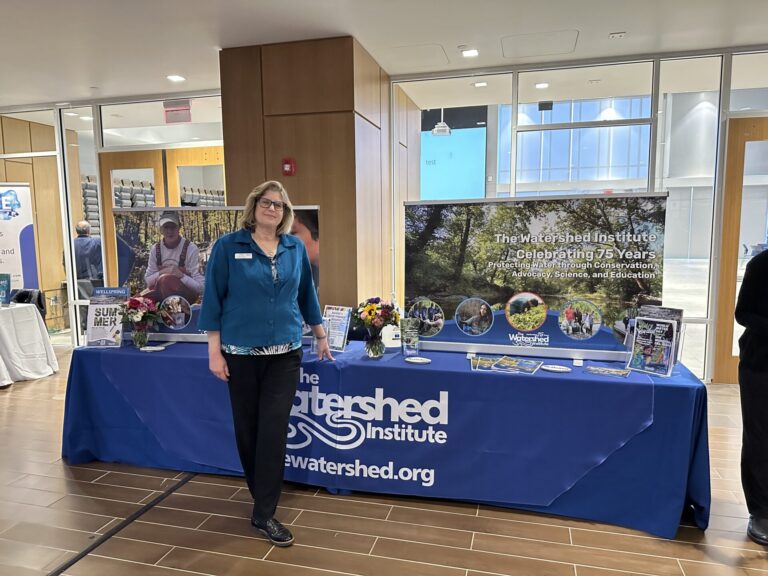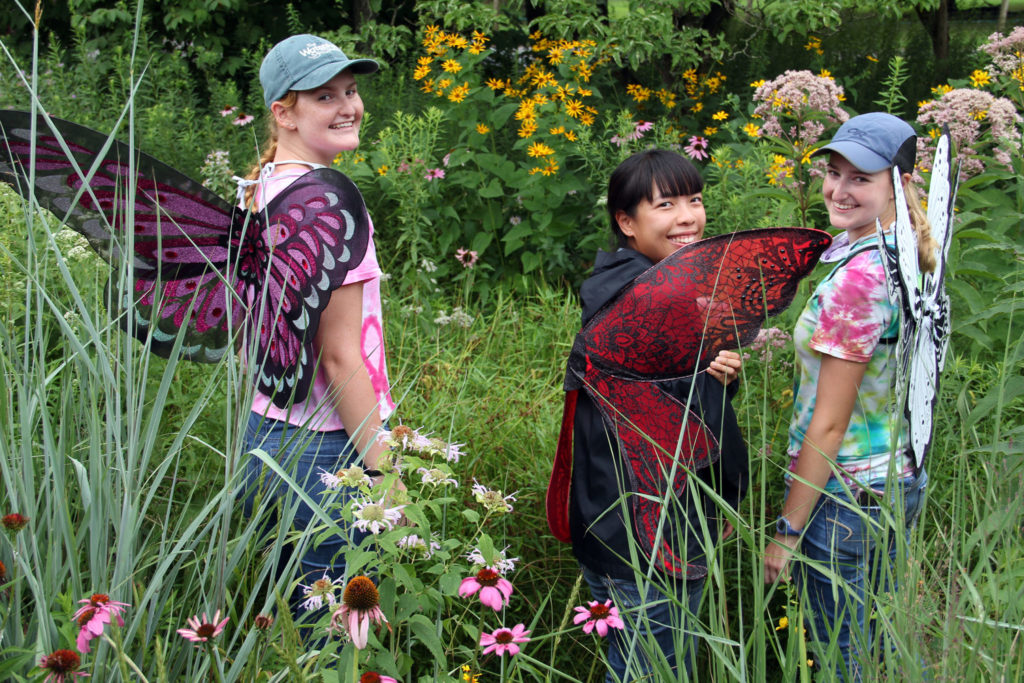 When the pandemic hit, many college students saw their summer internship plans evaporate and ended up scrambling. Yet three college students were still able to gain valuable experience as stewardship interns at The Watershed Institute.
When the pandemic hit, many college students saw their summer internship plans evaporate and ended up scrambling. Yet three college students were still able to gain valuable experience as stewardship interns at The Watershed Institute.
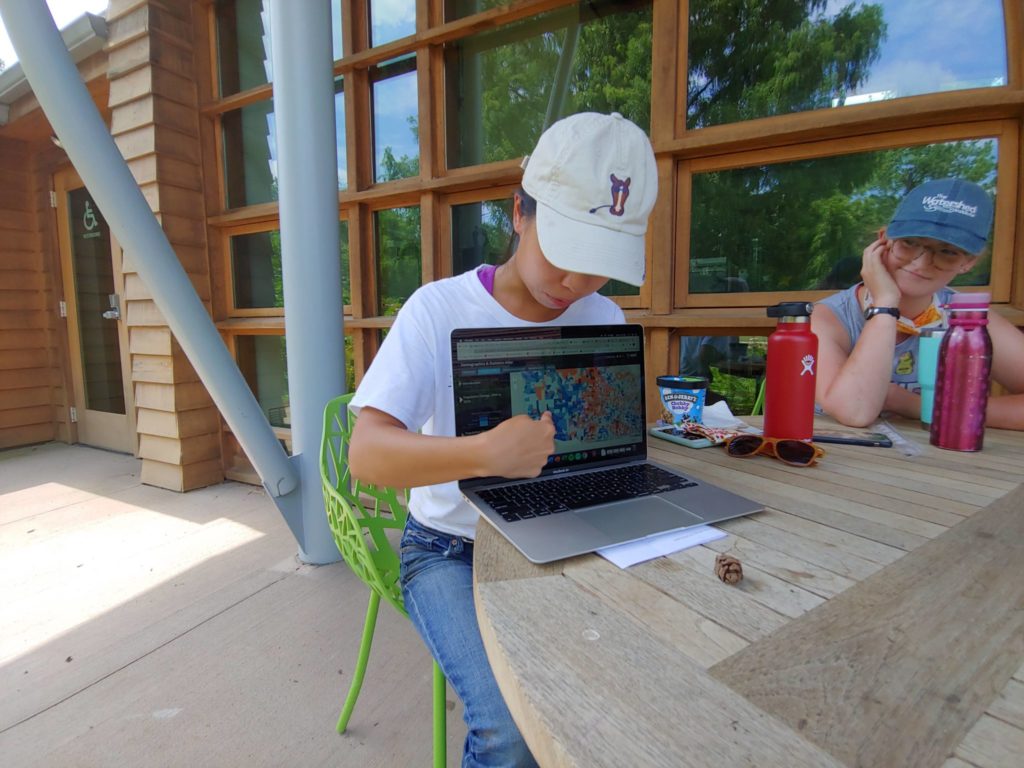 This summer, they learned about land stewardship, green infrastructure, forest restoration, and soil analysis under the tutelage of Watershed’s Stewardship Coordinator, Allison Jackson, and Stormwater Specialist, Kory Kreiseder.
This summer, they learned about land stewardship, green infrastructure, forest restoration, and soil analysis under the tutelage of Watershed’s Stewardship Coordinator, Allison Jackson, and Stormwater Specialist, Kory Kreiseder.
The summer stewardship team also tucked in some fun, dressing up as butterflies for a virtual Butterfly Festival dance, learning how to drive a tractor, and walking the Watershed Reserve property each Monday to review its conditions.
“I was extremely grateful that the Watershed took us on even with the pandemic,” said Maia Kessler, 19, a rising sophomore who is studying landscape architecture at the University of Maryland. “With a smaller group of interns, there was more one-on-one attention and a deeper experience.”
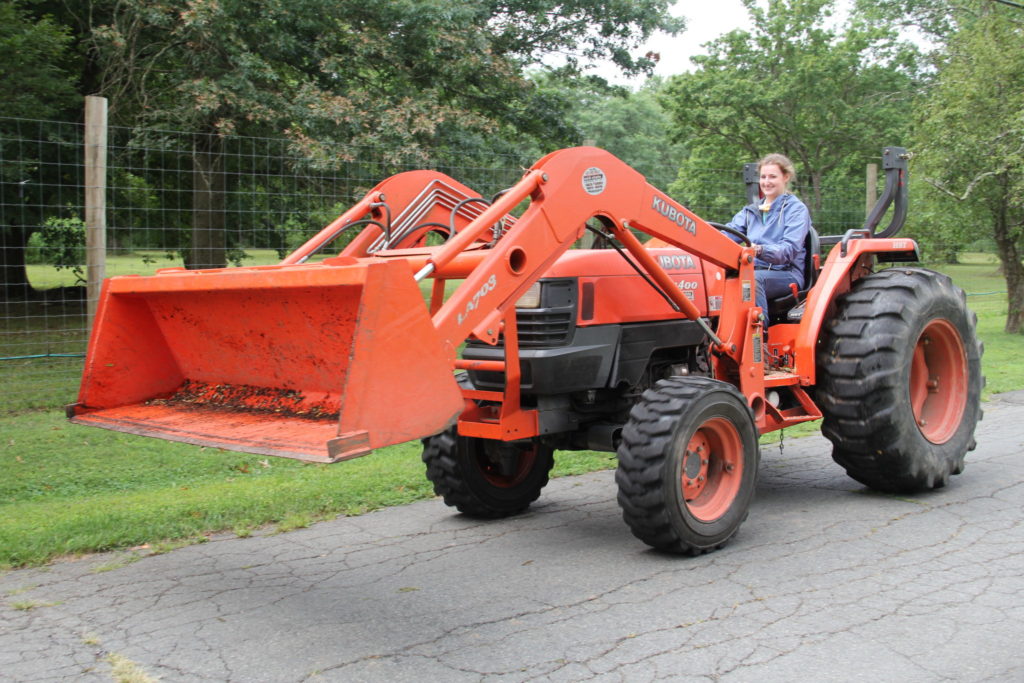 With the Watershed Reserve’s 950 acres and 10 miles of trails, the interns were “a vital workforce to do and maintain all of our green infrastructure and stewardship projects,” Allison said. “We could not have completed as many tasks as we did this summer without them.”
With the Watershed Reserve’s 950 acres and 10 miles of trails, the interns were “a vital workforce to do and maintain all of our green infrastructure and stewardship projects,” Allison said. “We could not have completed as many tasks as we did this summer without them.”
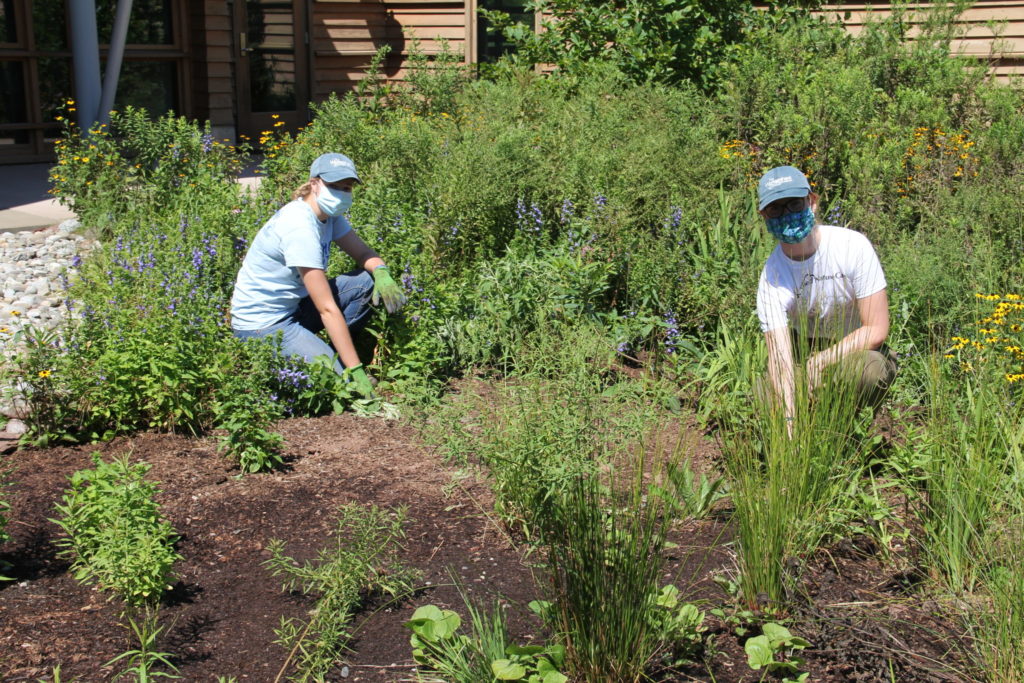 “We depend on interns to be able to not only do the research, experimentation, and stewardship necessary on our Reserve but also to be inquisitive and observant enough to realize when plants are not growing as expected and to help us determine what is going wrong,” Kory said. “We help them develop an eye so they can identify plants that are good natives and plants that are invasive, and how to work with both in order to create a better ecological landscape where native insects, animals, and plants flourish.”
“We depend on interns to be able to not only do the research, experimentation, and stewardship necessary on our Reserve but also to be inquisitive and observant enough to realize when plants are not growing as expected and to help us determine what is going wrong,” Kory said. “We help them develop an eye so they can identify plants that are good natives and plants that are invasive, and how to work with both in order to create a better ecological landscape where native insects, animals, and plants flourish.”
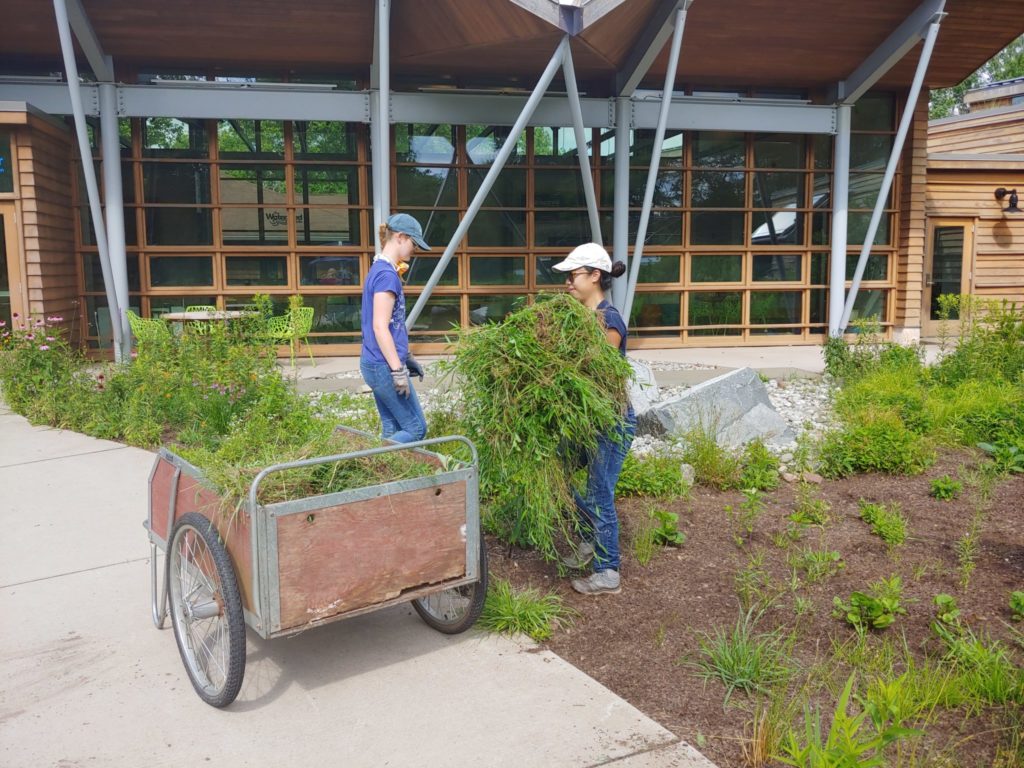 Two interns, who are sisters, were familiar with the property as they had returned for a second summer, while one was involved for the first time at the Watershed.
Two interns, who are sisters, were familiar with the property as they had returned for a second summer, while one was involved for the first time at the Watershed.
Maeve Kessler, 21, a rising junior at the University of Maryland who is studying environmental science, is the Ted Stiles Environmental Stewardship intern. For a second year, she helped with the rain garden, native tree nursery, invasive plant removal, reforestation, and other stewardship projects.
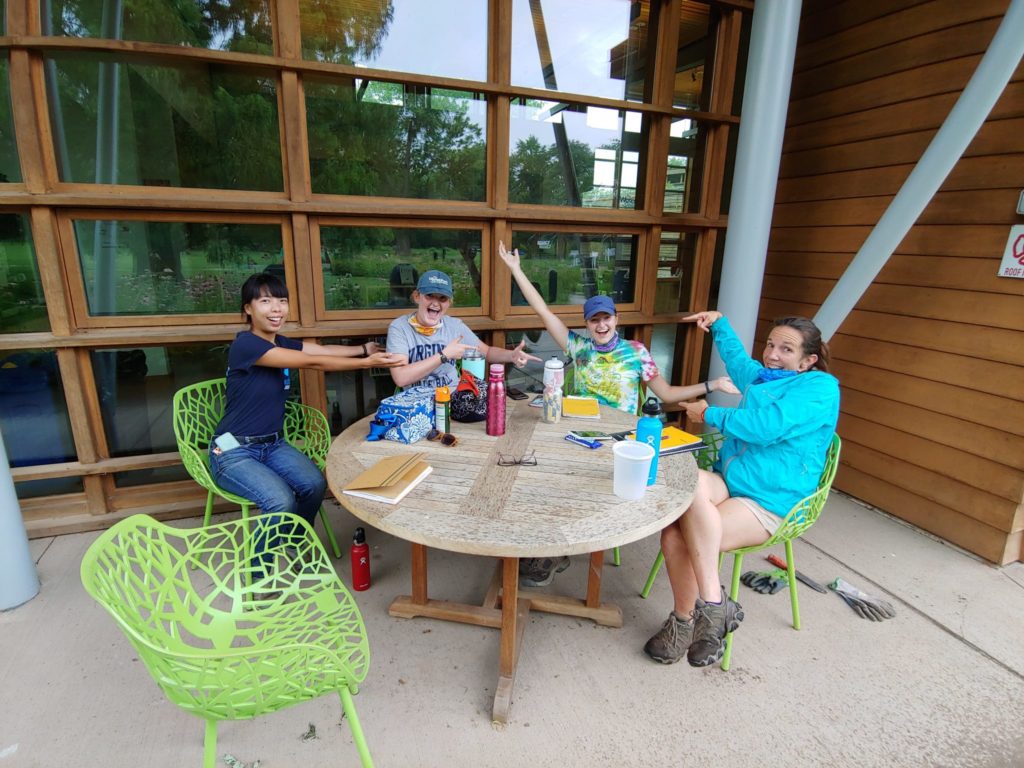 Maeve did some experiments to help determine the soil characteristics, composition, and plant growing conditions in the rain gardens. While the clay soil appeared compacted, she discovered it actually has good porosity and nutrients, although it tilted toward acidic composition. This summer, she also deepened her understanding of green infrastructure, which mimics nature in absorbing and cleansing soil with rain gardens, bioswales, vegetated strips, and other methods.
Maeve did some experiments to help determine the soil characteristics, composition, and plant growing conditions in the rain gardens. While the clay soil appeared compacted, she discovered it actually has good porosity and nutrients, although it tilted toward acidic composition. This summer, she also deepened her understanding of green infrastructure, which mimics nature in absorbing and cleansing soil with rain gardens, bioswales, vegetated strips, and other methods.
“In stewardship, maintenance is very important,” Maeve said. “For anyone who wants to put in a rain garden, it is important to know the characteristics of your soil so you can take action and get the best results.”
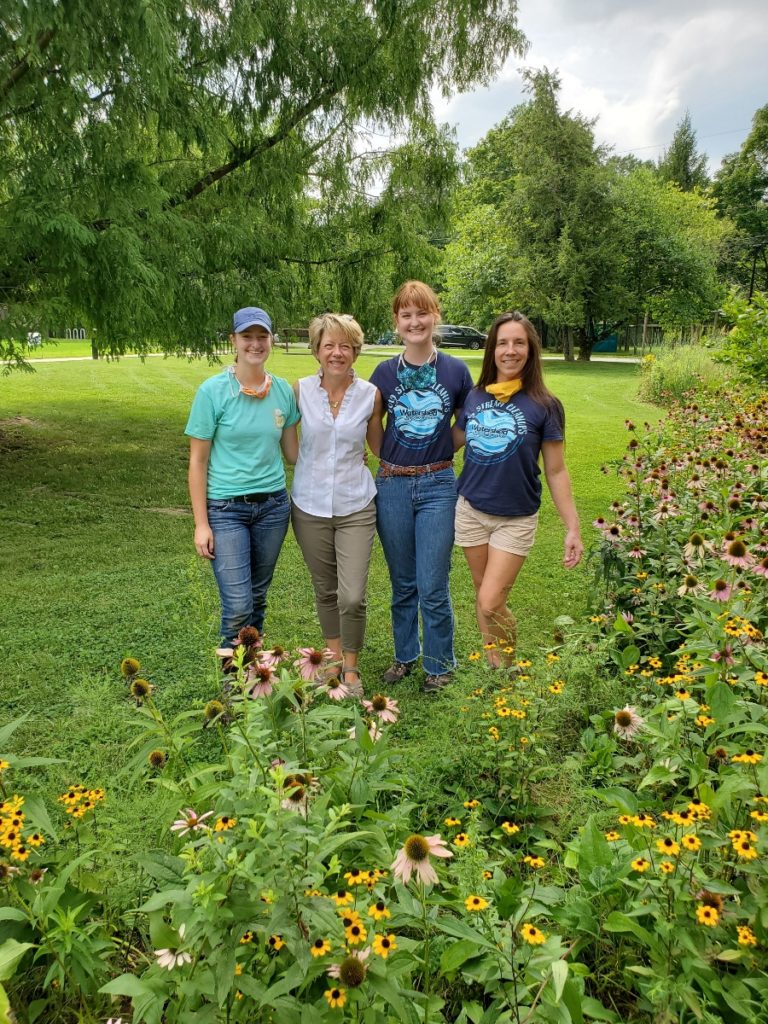 Olivia Spildooren, 21, a senior at Dickinson College, said she decided to do a Watershed internship to learn new field-based skills and because she appreciated the mission and welcoming staff.
Olivia Spildooren, 21, a senior at Dickinson College, said she decided to do a Watershed internship to learn new field-based skills and because she appreciated the mission and welcoming staff.
She said the Monday walks, when the team reviewed the condition of the plants and create weekly plans, were some of her favorite experiences, “I loved it when we would all get excited about finding a certain plant doing very well or would find a cool insect and show everyone.”
“Each day I was here, I learned at least one new thing; how to identify many different invasive and native plants, especially while working in the rain gardens. I also learned about green infrastructure, trail maintenance, and about plant life cycles,” she said. “The best part was being surrounded by people who were passionate about the same things as me.”
Maia created a design board on one rain garden to explain how and why it was built as well as what types of plants and soils were used in its installation. She also explained different features in the garden that help it function better, such as stilling basins to help settle out sediment and to slow water as it entered the garden.
She said this summer propelled her interest in landscape architecture that “allows me to be creative, integrate my artistic skills and act on my environmentalism to make a difference with green infrastructure and ecological design.”
Kory said all three interns were instrumental in creating the upcoming new Green Stormwater Infrastructure story map that, when it is published, will provide a virtual tour of green infrastructure and provide details about each facility in our local area.

